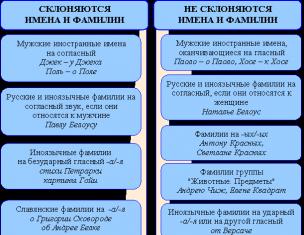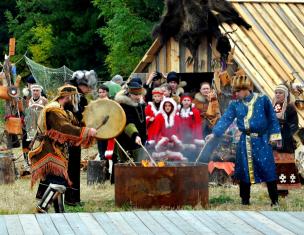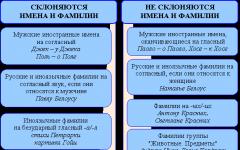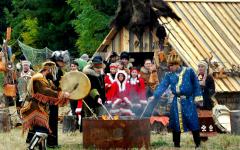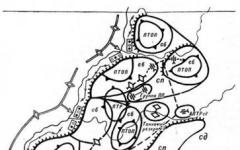Louis Pasteur's major scientific discoveries and inventions influenced the development of chemistry, biology and other sciences. What is Louis Pasteur famous for? You will find out in this article.
Louis Pasteur and his discoveries
The French scientist Louis Pasteur, being a chemist by training, devoted his entire life to the study and research of microorganisms, and also developed methods to combat diseases.
Microbiologist Louis Pasteur studied the spontaneous generation of microbes and fermentation processes, silkworms and diseases of beer and wine. Scientist developed vaccines against rabies and anthrax.
Louis Pasteur's invention
Louis Pasteur, the founder of microbiology, who received a prize from the French Academy for something disproved the long-held theory of spontaneous generation of microorganisms.
Louis Pasteur proved that many known processes, such as putrefaction and fermentation, are caused by microorganisms. The scientist was the first to discovered anaerobes- these are microbes that can easily multiply and live without access to oxygen. His work in this direction was very significant, because it implied practical significance.
Louis Pasteur also discovered that beer and wine diseases are also caused by microorganisms, they cause them to sour and ferment. He was developing practical measures to protect drinks from spoilage. The scientist concluded that heating them at 60-70°C and warming up the drinks kills microbes and protects them from souring. This method called pasteurization and is still used in industry.
Louis Pasteur's scientific discoveries are also associated with the proof that microorganisms cause putrefactive processes. This discovery was of great importance for surgery. The famous English surgeon Joseph Lister proposed, based on Pasteur's discovery, a system of measures to protect wounds from the ingress of microbes and the subsequent development of inflammatory processes.
Also great are the achievements of the microbiologist in the field studying rabies and anthrax. He proved that the causative agents of the disease are rod bacterium. He proposed his own system for combating pathogens by creating a vaccine. Pasteur derived a vaccine against rabies from the brain of a rabbit.
Louis Pasteur is considered the founder of vaccination. And in this area he succeeded a lot, thereby giving impetus to future discoveries of other researchers.
We hope that from this article you learned what the merit of Louis Pasteur is.
French scientist Louis Pasteur known throughout scientific world thanks to his discoveries and practical achievements in the field of microbiology, chemistry, the development of vaccines against serious diseases and many other achievements.
Brief biography of the scientist
Louis Pasteur was born December 27, 1822 in the French city of Jura (Dol). His father is Jean Pasteur, a tanner, a participant in military operations under the leadership of Napoleon Bonaparte. The Pasteur family was friendly. His father, who had not received any education at one time, decided to fill this gap by giving Louis the opportunity to study.
Pasteur delighted his parents with his academic success and extraordinary diligence. Louis read a lot, loved to draw, but, perhaps, did not particularly stand out from his peers. And only exceptional accuracy, observation and the ability to work with great passion made it possible to foresee a future scientist in him.
Education of Louis Pasteur
Despite poor health and lack of funds, Louis Pasteur successfully completed his studies, first at college in Arbois and then in Besançon. Having completed the course here with a bachelor's degree, he entered in 1843 Higher normal school, preparing teachers for secondary schools.
Louis was especially keen chemistry and physics. At school he listened to Balar's lectures. And the famous chemist Jean Baptiste Dumas I went to listen to the Sorbonne. Pasteur was captivated by work in the laboratory. In his enthusiasm for experiments, he often forgot about rest.
Success in learning
After graduating from school in 1847, Louis Pasteur passed the exams for the title associate professor physical sciences . A year later he defended his doctoral dissertation.
At that time, Pasteur was not yet twenty-six years old, but he had already gained fame for his research in the field of crystal structure. The young scientist gave an answer to a question that had remained unresolved before him, despite the efforts of many leading scientists.
Founder of stereochemistry
He discovered the reason for the unequal influence of a beam of polarized light on crystals organic matter. This outstanding discovery subsequently led to the emergence stereochemistry- science of the spatial arrangement of atoms in molecules.
In the same 1848 Pasteur became an associate professor of physics at Dijon. Three months later he takes up a new position as associate professor of chemistry in Strasbourg. Pasteur took an active part in the revolution of 1848 and even joined the National Guard.
Personal life
In 1849 Pasteur married Marie Lauren. They had four children. But two of them, unfortunately, died very young. Their family relationships were role models: Louis and Marie respected each other and appreciated humor.
Study of fermentation
Pasteur became interested in the phenomena fermentation, began to study them, and these studies led him to extraordinary discoveries. This is how Pasteur, a chemist and physicist, first touched upon the fascinating field of biology.
It was not by chance that Pasteur became interested in fermentation phenomena. He was never an armchair scientist who isolated himself from the demands of life. Louis understood well what a huge role in economic life France played winemakers e, and it is entirely based on the phenomena of fermentation of grape juice.
Scientific discovery
In his laboratory in Lille in 1857 Pasteur made a remarkable discovery:
He proved that fermentation is not a chemical process, as was commonly thought then, but biological phenomenon. It turned out that any fermentation (alcoholic, acetic acid, etc.) is the result of the vital activity of special microscopic organisms - yeast fungi.
Second discovery
While studying fermentation, Louis Pasteur made another important discovery: he found that there were organisms that could live without oxygen. For them, oxygen is not only unnecessary, but also harmful. Such organisms are called anaerobic. Their representatives are microbes that cause butyric acid fermentation. The proliferation of such microbes causes rancidity in wine and beer.
Recognition of merit
In 1874, the Chamber of Deputies, in recognition of outstanding services to the homeland, awarded Pasteur a lifetime pension of 12,000 francs, increased in 1883 to 26,000 francs. In 1881, Louis was elected to the French Academy.
Starting with the solution to the “diseases” of wine and beer, the brilliant scientist Louis Pasteur devoted his entire future life to the study of microorganisms and the search for means to combat the pathogens of dangerous infectious diseases of animals and humans.
Vaccines for diseases
Public testing of the effectiveness of vaccination against anthrax, carried out in 1881, brilliantly confirmed the value of the method proposed by Pasteur.
In 1882, Louis Pasteur and his collaborators began studying swine rubella. Having isolated the pathogen, the scientist obtained weakened cultures of this microbe, which he successfully used as a vaccine.
Uphill battle for new treatments
But Pasteur and his followers had to wage a difficult the struggle for recognition of the new way prevention of infectious diseases. What kind of attacks did Pasteur endure? Reactionary scientists and journalists said that without a doctor's diploma he had no right to practice medicine.
The scientist was reproached for refuting scientific views, which existed for centuries, questioned his experiments. One failure was enough for Pasteur to be accused of infecting and killing people with his vaccinations. The great scientist, who benefited humanity, was at one time threatened with murder charges!
Louis Pasteur Awards
In 1889 Louis Pasteur resigned all his responsibilities in order to devote himself to the organization and management of the institute named after him. Pasteur's scientific merits were repeatedly assessed during his lifetime:
The Royal Society of London awarded him two gold medals in 1856 and 1874; The French Academy of Sciences awarded him a prize for his work on the question of spontaneous generation.
last years of life
Louis Pasteur created the world scientific school of microbiologists, many of his students later became major scientists. Pasteur was a staunch friend of Russia and was on close terms with many Russian scientists.
Almost all Russian microbiologists of that time went to work with Pasteur, and later at his institute in Paris. This is what Pasteur said to his students:
“Be sure that you have opened an important scientific fact, burn with a feverish desire to notify the whole world about it and restrain yourself for days, weeks, sometimes years; to enter into a struggle with oneself, to strain all one’s strength in order to destroy the fruits of one’s labors oneself and not to proclaim the result obtained until one has tried all the contradictory hypotheses - yes, this is a difficult feat.”
The discoveries made by the great French scientist Louis Pasteur are commemorated on a plaque at the entrance to his first laboratory: “Here was Pasteur's laboratory; 1857 - ; 1860 - spontaneous generation; 1865 - diseases of wine and beer; 1863 - diseases of silkworms; 1881 - infection and vaccine; 1885 - protection against rabies."
“To the Worker of Miracles” was written instead of an address on the envelope of one of the letters to Pasteur.
Who is he, this amazing scientist? A chemist by training, he considered himself a bacteriologist. He understood science as a living, loving service to humanity.
At the age of 25, Pasteur successfully completed a course in physics and chemistry at the Ecole Normale Supérieure in Paris. His first work was related to optical activity chemical substances and subsequently led to the emergence of stereochemistry. At the age of 27 he became a professor at the University of Strasbourg, and at 32 he became the dean of the Faculty of Natural History at the University of Lille. Here he began studying mechanisms, was the first to establish the difference between processes and determined the role of certain organisms in various processes.
Pasteur was interested in the question of the origin of microorganisms. At that time, it was believed that many living beings arise through spontaneous generation with the participation of a certain “life force.” Pasteur resolved endless discussions and disputes with adherents of the theory of spontaneous generation in the following simple and witty way. Sterilized culture media for microorganisms in two glass vessels. In one of them, the neck was left open, and microorganisms could easily penetrate through it into the vessel. The second one was closed and nutrient medium remained inaccessible. Not a single one appeared in the second vessel for four years. This is how the theory of spontaneous generation of microorganisms was refuted.
The scientist introduced into practice a quickly adopted method of processing milk by heating to a temperature of 60-70 ° C to destroy microbes, called pasteurization. (The same principle was applied in the production of wine and beer). He identified bacterial pathogens of silkworms and developed methods for preventing these diseases.
In 1868, Pasteur became seriously ill, but continued to work intensively, and subsequent most important discoveries did while semi-paralyzed. He discovered many pathogenic microorganisms. Among them is the causative agent of anthrax, a deadly disease of many animals that is also dangerous to humans. Pasteur created a vaccine to inoculate against this disease.
Last thing greatest discovery Pasteur's rabies vaccine. The genius of the scientist was that, without knowing anything specific about the causes of rabies, except for the indisputable fact of its infectious nature, he used the principle of weakening the pathogen when developing a vaccine. July 6, 1885 is a significant day in the history of medicine. The mother of a nine-year-old boy, bitten by a rabid dog and doomed to death, turned to Pasteur. Pasteur first used his method of vaccination. The 20 days of waiting for the result were the most difficult for the scientist. Both the boy and the scientist passed the test. Pasteur's method spread widely in many countries and saved many people.
Pasteur is the founder of modern microbiology and immunology (see). In 1888, he created and headed the Research Institute of Microbiology (Pasteur Institute), where many famous scientists worked.
Professor V.D. Soloviev
On the fiftieth anniversary of his death
Louis Pasteur in the laboratory. In the picture there is an inscription: “In memory of the famous Mechnikov, the creator of the phagocytic theory, from the sincerely devoted Pasteur.
Ru and I. I. Mechnikov (Paris).
In Paris, on Rue Dutot, in a low, modest building surrounded by a cast-iron fence, the Pasteur Institute is located - one of the most interesting scientific institutions in the world. The institute was created according to the plan of the great scientist whose name it bears. It is built in last years Pasteur's life with funds raised through international voluntary subscription. The Pasteur Institute is the center of microbiological science in France and played an exceptional role in the development of this science. The best French bacteriologists, as well as many outstanding researchers from other countries, including Russian scientists, worked within its walls. The world famous Russian zoologist and microbiologist Ilya Ilyich Mechnikov was at one time Scientific supervisor of this Institute. Here, during the lifetime of Pasteur himself, N. F. Gamaleya, now an honorary member of the USSR Academy of Sciences, studied bacteriological skills.
The great scientist remained at his Institute forever, even after death. On the ground floor, in a small chapel, there is his tomb. Above the entrance there is an inscription: “Here lies Pasteur”, and on the sides there are two dates: “1822” and “1895” - the years of birth and death of this wonderful person! Inside, on the marble walls, the most important stages of Louis Pasteur’s activity and the years of his discoveries are marked: 1848 - molecular asymmetry. 1857 - enzymes, 1862 - so-called spontaneous generation, 1863 - observations on wine, 1865 - diseases of silkworms, 1871 - observations on beer, 1877 - infectious diseases, 1880 - preventive vaccinations, 1885 - prevention of rabies. This short chronological list reflects the history creative life great scientist.
The son of a tanner from Arbois, a small town in eastern France, and the great-grandson of a serf, Louis Pasteur began his scientific career by studying theoretical issues of chemistry and chemical crystallography. While still a student at the Ecole Normale in Paris, he began his research on two acids extracted from tartar - tartaric and grape. These two acids are similar in their chemical composition, differ in one feature: the salts of the first of them rotate the plane of polarization to the right, while the salts of the second are optically inactive. Studying the causes of this phenomenon, Pasteur found that during the crystallization of the double ammonium-sodium salt of grape acid, two types of crystals stand out, differing from each other by the presence of tiny areas or edges that had previously escaped the attention of researchers. These areas were only on one plane of the crystal and caused their incomplete symmetry: sometimes they were on the left, and sometimes on the right side. The pastor collected separately crystals of this salt with edges on the left side and crystals with edges on the right side. From these and other crystals he isolated free acid. It turned out that the solution of the first crystals rotates the plane of polarization to the left, and the solution of the second crystals rotates to the right.
In this way, for the first time in the history of chemistry, an optically active substance was artificially obtained from an inactive starting material. Previously, it was believed that the formation of optically active substances could only occur in living organisms. Pasteur explained the optical activity of right and left tartaric acids by the asymmetry of their molecules. Thus, the concept of molecular asymmetry was introduced into science.
Further developing his method of artificial splitting chemical compounds, Pasteur used the action of molds. This was the beginning of his subsequent work on microbes. Thus, purely chemical research contributed to the creation of one of the most important branches of biology - microbiology. The creation of this science is inextricably linked with the name of Pasteur. What is the cause of contagious diseases, how the infection is transmitted to a person - this became clear only when the brilliant mind of the Pastor revealed the secret driving force fermentation and directed the development of science along a completely new path.
In the pre-Paster era, i.e. 60-70 years ago, humanity had a very vague idea of what infectious diseases were. There were known severe epidemics of cholera, smallpox, and plague, which the people called the “Black Death”; they carried millions of people to their graves. Many other endemic diseases were known, but what were the causes that caused them, and what should be the measures to combat them, no one knew. How powerless practical medicine was at that time can be seen from the example Crimean War 1854 Vaud French army, numbering more than 300,000 soldiers, about 10,000 were killed, and 85,000 died from disease and contagious complications of wounds. In other words, in an army recruited from the healthiest and hardiest men, more than a quarter of the entire army fell victim to disease. The imperfection of surgery at that time is indicated by the enormous mortality rate from purulent complications of wounds. For example, 92% of those operated on died during hip amputation. The main reason for such terrible losses was ignorance of those rules of hygiene that seem to us now the most basic.
By the age of 35, Louis Pasteur was already a famous scientist. His works devoted to this time date back to biological theory fermentation. Facts have been established with impeccable accuracy showing that all fermentation processes are not simple chemical phenomena, as previously thought, but the result of exposure to microorganisms. Through a series of brilliant studies, Pasteur established the mechanism various forms fermentation, where the active principle turned out to be living creatures of negligible size, belonging either to yeast fungi or bacteria.
Later, when studying the processes of decay, Pasteur showed that they were also caused by the activity of microbes. He also understood the enormous importance that microorganisms have in the transformation of complex protein substances into a primitive state. “If microscopic creatures disappeared from the surface of the earth, it would quickly become cluttered with dead organic waste and all kinds of animal corpses and plant remains,” wrote Pasteur. “Without their participation, life would soon cease, since the work of death would remain unfinished.”
Where do these microorganisms, which play such a large role in nature, come from, what is their origin?
Pasteur's subsequent classic studies provided a clear answer to this question. It has been proven that there is no spontaneous generation of microorganisms, that wherever we find microorganisms, they were introduced from outside. It turned out that it is entirely within the power of man not only to cause, but also to prevent any of the phenomena of fermentation or decay. It turned out that there are microorganisms that can be used by humans, for example, to convert wort into alcohol, alcohol into vinegar. There are also harmful microorganisms, that is, those that cause infectious diseases.
These remarkable discoveries of Pasteur not only found practical application in industry and agriculture, but they illuminated all medicine with a new light and laid the foundation new science, the study of microorganisms - microbiology.
The famous English surgeon, Joseph Lister, having understood the depth of the ideas of his contemporary Pastor, drew the following practical conclusion from them: if purulent complications of wounds depend on the action of microorganisms that have entered from the outside, from the air, then, for successful treatment, it is necessary to prevent microbes from entering the wound. So was introduced into surgery new method treatment of wounds, called the putrefactive or antiseptic method, which was later replaced by a more advanced one - aseptic. The aseptic method consists of maintaining strict cleanliness and observing conditions that strictly prevent the penetration of infection, i.e. microorganisms, from environment. “Allow me,” Lister wrote to Pastor, “to thank you from the bottom of my heart for opening my eyes with your brilliant research to the existence of pyogenic microbes and thereby making it possible to successfully apply the antiseptic method in my work. If you ever come to Edinburgh, I am sure that in our hospital you will receive real satisfaction in seeing how high degree humanity has been blessed by your labors.”
Pasteur became interested in medical issues, studying the processes of infection and decay. His attention was especially occupied by the idea of the uniqueness of some infectious diseases. What is the reason for immunity, i.e. the body’s ability to resist the effects of infectious diseases?
In 1880, while researching a disease of chickens - chicken cholera, he discovered the remarkable property of the causative agent of this disease - not only to cause the disease, but also to create immunity against it. If an artificial breeding or, as they say, a microbial culture has become less toxic due to its long-term storage outside the body, then it can cause only a weak form of the disease. But after this, immunity is created - immunity to infection by even the most powerful microbial culture of a given disease. Thus, a method was found for preparing inoculations, or vaccines, i.e., material for vaccinations that protect against infectious diseases.
Although Pastor was already 58 years old at this time, it was now that the period of his most outstanding discoveries began. The discovery of a vaccine immunizing against chicken cholera was followed by experiments in the study of anthrax. Anthrax - a severe, often fatal disease of livestock, sometimes affecting humans - brought enormous losses to livestock farms at that time. Armed with his brilliant method of weakening the causative agents of infectious diseases and using them for vaccinations, Pasteur, after numerous laboratory experiments, began to produce a vaccine against anthrax. After persistent and painstaking work, Pasteur managed to find the conditions under which anthrax microbes lose their toxicity and prepare a vaccine. It was tested in a famous public experiment at the Poullier-Le-Fort farm in the spring of 1881. Having received 60 sheep and cows at his disposal, Pasteur gave half of them several preliminary vaccinations and then, in the presence of numerous spectators, infected both vaccinated and unvaccinated animals with anthrax in its most deadly form. All present were warned that after 48 hours, thirty animals would die, and the remaining half - the previously vaccinated animals - would remain unharmed. The prediction came true literally. Those gathered at Pouglier-les-Forts were presented with the following picture: 22 sheep lay dead, 2 died in front of the spectators, and the remaining 6 animals died by the end of the day; 30 vaccinated people remained alive and well.
The effect of this experience was exceptional. Newspapers around the world noted Pasteur's unprecedented success. The vaccination method he developed received full recognition.
Following his victory over anthrax, Pasteur moved forward along the intended path. Now he took on a new, very difficult task - to find the rabies microbe. The very name of this disease, always fatal to humans, inspired horror. Medicine did not know any means of combating rabies, and it was well known; If a person is bitten by a rabid wolf or dog and falls ill, then there is no salvation; the person bitten must die in the grave torments of hydrophobia.
A long, intense search this time did not yield the usual result. The rabies microbe could not be found either in sick people or in sick animals. We now know that the causative agent of this disease cannot be seen under a microscope, it belongs to the category of so-called filterable viruses and can only be detected by special research methods unknown in Pasteur’s time. All the more so, Pasteur’s gift of foresight seems great: not having found the microbe that causes hydrophobia, he did not stop his research and, through the most ingenious experiments and logical conclusions, discovered a way to combat rabies.
When studying dogs with rabies, it was discovered that the reservoir of infection is the nervous system - the brain and spinal cord. If you take the pieces nerve tissue, crush them and then use a syringe to inject them under the cranial bone of a healthy animal, then typical rabies breaks down in him. Thus, it is possible to induce illness at the will of the experimenter. Following further his principle of weakening the infectious principle and then using it to create immunity, Pastor found a way to weaken the terrible poison of rabies. His talented assistants Roux and Chamberlant removed the spinal cord from a rabbit that had died of rabies and then dried it for 14 days in a glass jar. In this way, 14 varieties of dried rabies poison were prepared, with varying strengths, ranging from almost harmless to one-day dried poison that could kill an unvaccinated dog. But if you inject dogs sequentially with these 14 doses, starting from the weakest, and then infect the vaccinated animals with the deadly rabies poison, the vaccinated dogs will not get sick.
After careful monitoring of these experiments, the commission French Academy sciences came to the following conclusion: “if a dog is immunized with gradually increasing doses of a poisonous spinal cord mad rabbits, she can never get rabies again.”
Victory seemed to be in Pasteur's hands, but another issue had to be resolved. Is it possible with such vaccinations to save from the disease not only before the infection penetrates, but also after the bite of a rabid animal? In other words, is it possible not only to prevent a disease, but also to cure it? And this issue was soon resolved. Rabies poison acts slowly. From the moment of the bite to the appearance of the first signs of the disease, several weeks and sometimes months pass. Therefore, it turned out to be possible, after this deadly poison, slowly moving to the central nervous system, to send a weakened poison, but with a faster effect. He stays ahead of the strong poison and prepares nervous system, making the body invulnerable.
This bold and brilliant idea of Pasteur was brilliantly implemented and confirmed by numerous experiments. But experiments on animals, no matter how good they may be, are not yet enough to judge the benefits of vaccinations for humans. And so on July 4, 1885, the first injection of weakened rabies poison was made to a person. It was nine-year-old Joseph Meister, an unfortunate boy who was brutally bitten by a rabid dog. Day after day, the first patient received all 14 vaccinations. Vaccinations saved the boy from a fatal disease.
At this time Pasteur was 63 years old. This was the pinnacle of his scientific activity and fame; His name became the property of all mankind.
Pasteur's services to science are great, and it is impossible to short essay convey the full significance of his discoveries. Microbiology, of which he is rightfully considered the founder, has now developed into a vast independent branch natural sciences, which plays an extremely important role not only in medicine, but also in veterinary medicine and agriculture.
In medicine, Pasteur's works, as we have already seen, are of great importance for the development of surgery and for the fight against infectious diseases. Modern immunology, i.e., the doctrine of immunity to infectious diseases, is entirely based on the immunization method discovered by Pasteur: the use of pathogenic microorganisms weakened in their toxicity for vaccinations that protect against infection. The method of protection against rabies developed by Pasteur saved humanity from the horrors of this terrible disease. All over the world, special institutions have been organized, the so-called Pasteur stations, where they prepare material for vaccinations against rabies. It is interesting to remember that the second Pasteur station in the world, after the Paris one, was organized in Russia, by Russian scientists I. I. Mechnikov and N. F. Gamaleya.
Pasteur's importance in medicine is also great because he widely introduced the experimental (experimental) method of research into the study of medical issues. This method armed scientists with that precise knowledge of disease processes, which was completely absent in the pre-Pasteur era, and has brought so many brilliant successes to date.
Half a century scientific activity Pasteur, full of hard work and endless research, passed under the banner of the creative power of thought and the amazing ability to transform her ideas through a long series of experiments into indisputably proven facts. He taught his students: “Do not say anything that you cannot prove simply and beyond doubt. Bow to the spirit of criticism. By itself, it does not reveal new ideas and does not inspire great deeds. But without it nothing is strong. He always has the last word. This demand, which I make of you, and which you will make of your students, is the most difficult one that can be made of a researcher making discoveries. Be sure that you have discovered an important scientific fact, burn with a feverish desire to notify the whole world about it and ask yourself for days, weeks, sometimes years; to enter into a struggle with oneself, to strain all one’s strength in order to destroy the fruits of one’s labors oneself and not to proclaim the result obtained until one has tried all the contradictory hypotheses - yes, this is a difficult feat. But, on the other hand, when after so much effort you achieve complete certainty, you experience one of the highest joys available to the human soul.”
The Pastor's life is an excellent confirmation of his words. Devotion to science and selflessness were excellent traits of his character. “In the midst of one of his works,” recalls K. A. Timiryazev, “which, as always, absorbed all his physical strength, since intense mental work was usually complicated by insomnia, the doctor who treated him, seeing that all admonitions were in vain, turned out to be forced to threaten him with the words: “You are threatened, perhaps, with death, and certainly with a second blow.” Pasteur thought for a minute and calmly replied: “I cannot interrupt my work. I already foresee its end: come what may, I will fulfill my duty.”
Pasteur died on September 23, 1895 at the age of 73. 50 years have passed since then. Over these years, natural science has gone far ahead in its development. And in the progress of science, which we are witnessing, the unfading glory of the name of Pasteur's Luke lights the way for new searches and for new discoveries.
This ingenious discovery formed the basis of the principles of asepsis and antisepsis, giving a new round in the development of surgery, obstetrics and medicine in general.
Thanks to his research, pathogens of infectious diseases were not only discovered, but effective ways fight them. This is how vaccines against anthrax, chicken cholera, and swine rubella were discovered.
In 1885, Louis Pasteur developed a vaccine against rabies, a disease that in 100% of cases ends in the death of the patient. There is a legend that in childhood the future scientist saw a man bitten by a rabid wolf. The little boy was very shocked by the terrible picture of cauterization of the bite site with a hot iron. But when Pasteur finally created the vaccine, he hesitated for a long time to test the effectiveness of the rabies vaccine in humans. In the end, he decided to test the effect of the vaccine on himself. But chance helped: a boy was brought to him, bitten by a rabid dog. In any case, the child would have died, so Pasteur administered anti-tetanus serum to the child. After 14 injections the boy recovered.
From that moment on, Pasteur's fame spread throughout the world. IN different countries Pasteur stations began to open, where they administered vaccinations against rabies, anthrax and chicken cholera. In Russia, such a station appeared in 1886 in Odessa and at that time was the second in the world on the initiative of scientists I. I. Mechnikov and N. F. Gamaleya.
Pasteur and his followers, as well as Dr. Jenner, had to fight for the recognition of a new way to prevent infectious diseases. His experiments were questioned and criticized for his scientific views. His belief in his own rightness is perfectly illustrated by one story that has already become a legend.
Louis Pasteur studied smallpox bacteria in his laboratory. Unexpectedly, a stranger appeared to him and introduced himself as the second of a nobleman, who thought that the scientist had insulted him. The nobleman demanded satisfaction. Pasteur listened to the messenger and said: “Since I am being called, I have the right to choose a weapon. Here are two flasks; one contains smallpox bacteria, the other contains clean water. If the person who sent you agrees to drink one of them to choose from, I will drink the other.” . The duel did not take place.
Pasteur created the world scientific school microbiologists, many of his students later became major scientists. They own 8 Nobel Prizes. It was Pasteur who laid down one of the cornerstone principles scientific research, evidence, saying the famous “never trust what is not confirmed by experiments.”
In the 20th century, outstanding scientists developed and successfully used vaccinations against polio, hepatitis, diphtheria, measles, mumps, rubella, tuberculosis, and influenza.
Key vaccination history dates
- 1769 - First immunization against smallpox, Dr. Jenner
- 1885 - first immunization against rabies, Louis Pasteur
- 1891 - first successful serotherapy for diphtheria, Emil von Behring
- 1913 - first prophylactic vaccine against diphtheria, Emil von Behring
- 1921 - first vaccination against tuberculosis
- 1936 - first vaccination against tetanus
- 1936 - first flu vaccination
- 1939 - first vaccination against tick-borne encephalitis
- 1953 - first trials of inactivated polio vaccine
- 1956 - live polio vaccine (oral vaccination)
- 1980 - WHO statement on the complete elimination of human smallpox
- 1986 - first genetically engineered vaccine (HBV)
- 1987 - first conjugate vaccine against Haemophilus influenza B
- 1994 - the first genetically engineered bacterial vaccine (acellular whooping cough)
- 1999 - development of a new conjugate vaccine against meningococcal infection C
- 2000 - first conjugate vaccine to prevent pneumonia

